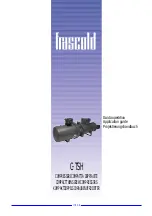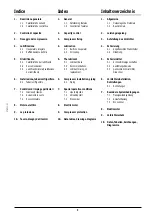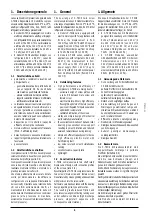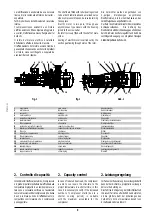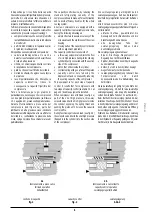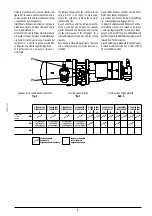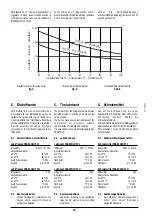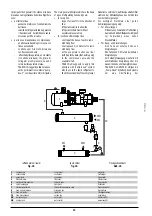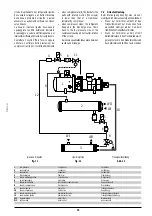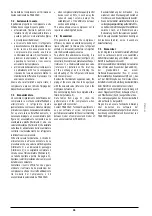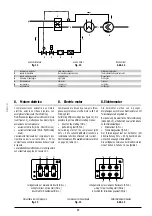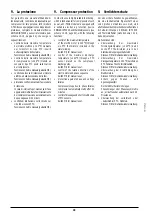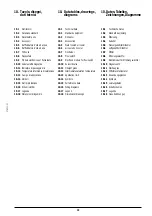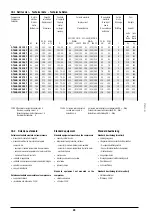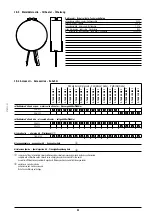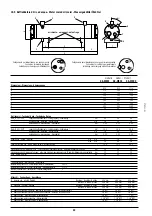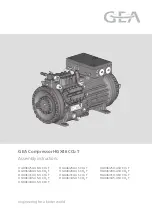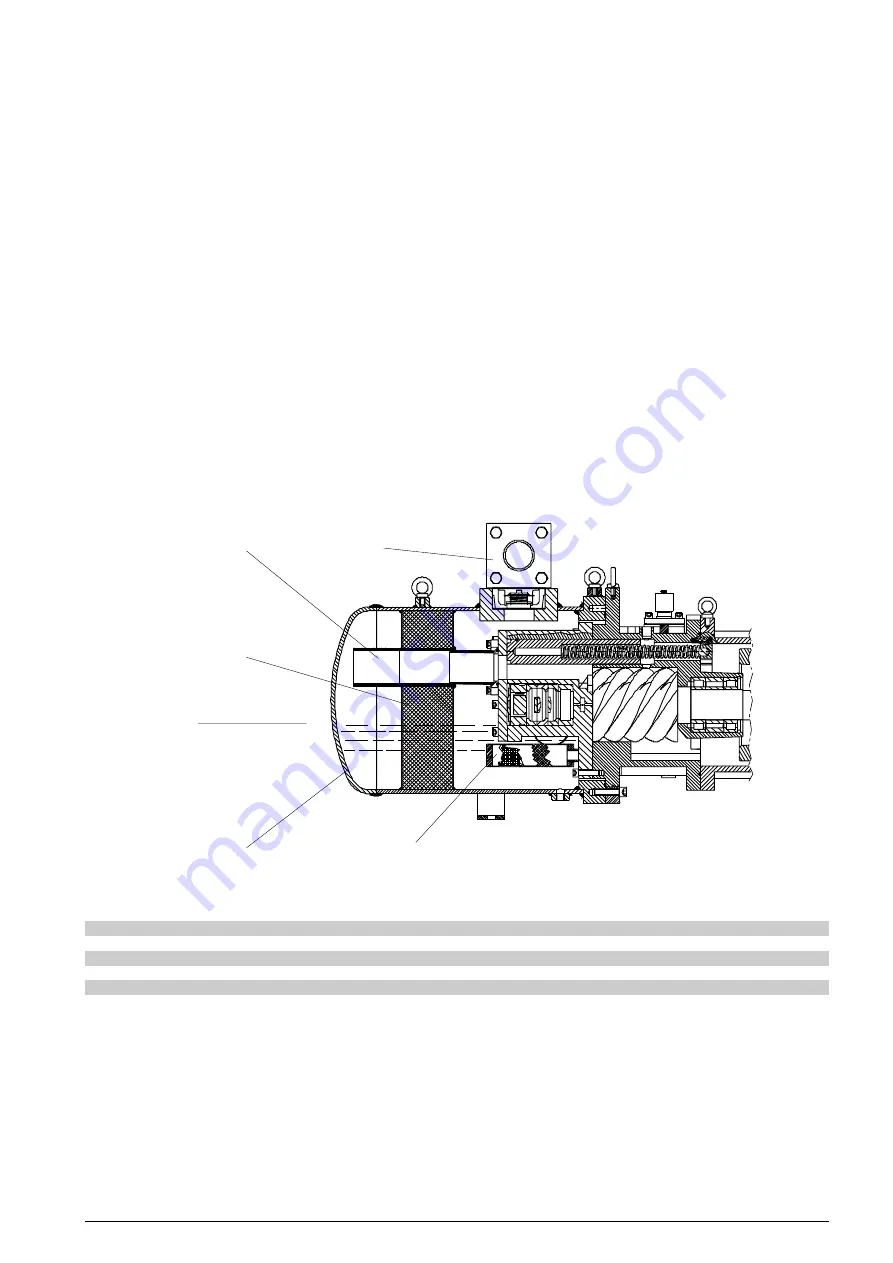
9
FTEC11-01
•
mantello del separatore (riferimento 3).
La sua forma e dimensioni sono tali da
provocare sia una repentina diminuzione
della velocità che un brusco cambiamento
di direzione del flusso di refrigerante.
Al suo interno si raccoglie il lubrificante
separato, mentre il refrigerante viene
convogliato verso il rubinetto di
compressione (riferimento 4).
•
filtro olio (riferimento 5).
È di tipo meccanico, con un grado di
filtrazione pari a 80
µ
m; è posizionato a
monte del condotto di lubrificazione così da
intercettare le particelle solide
eventualmente presenti nel lubrificante.
Dopo essere stato separato dal refrigerante e
filtrato attraverso il filtro meccanico, il lubrificante
spinto dall’alta pressione alla quale si trova, viene
iniettato tra le viti e nei cuscinetti.
L’olio oltre a provvedere alla lubrificazione delle
parti meccaniche in movimento, agisce da
sigillante dello spazio tra i profili delle viti.
•
shell of the separator (reference 3).
Shape and dimensions give a rapid
reduction in speed and direction of the
refrigerant flow.
Inside the oil separator, separated lubricant
is collected in the sump while the refrigerant
is directed towards the discharge valve
(reference 4)
•
oil strainer (reference 5).
It is a strainer with a grade of screening of
80
µ
m; oil demister is located before the
lubrication channel eliminating any foreign
parts getting back into the lubrication
system.
After the separation and filtration of the refrigerant
through the oil strainer, the lubricant is forced
by the discharge pressure and injected into the
screws and bearings.
Oil as well as providing lubrication between the
moving parts, the oil also acts as sealant between
the gap of the two screws.
•
Ölabscheiderfilter (Bezug 2).
Bei Durchqueren des Ölabscheiderfilters von
der Kältemittel, verursacht man eine weitere
Schmiermitteltrennung.
•
Außenmantel des Ölabscheiders (Bezug 3).
Die Form und Abmessungen verursachen eine
plötzliche Verminderung der
Kältemittelflußgeschwindigkeit und eine heftige
Änderung der Flußrichtung.
Auf der Innenseite sammelt sich das getrennte
Schmiermittel, während die Kältemittel sich auf
den Druckventil (Bezug 4) befördert.
•
Ölfilter (Bezug 5).
Mechanischer Typ, mit Filterungsgrad von
80
µ
m.
Er liegt über die Schmierungsleitung, um die
eventuelle feste Teilchen in das
Schmiermittel abzufangen.
Nach Trennung von der Kältemittel und
Filtration durch mechanischer Filter, wird das
Schmiermittel zwischen Schrauben und in
den Lager eingespritzt, durch Schub von
Hochdruck. Das Öl schmiert die mechanische
Teilen in Bewegung und versiegelt den Raum
zwischen die Schraubenprofilen.
1
2
3
5
4
livello dell’olio
oil level
Ölstand
fig. 5
fig. 5
Abb. 5
1
condotto di compressione
discharge duct
Druckleitung
2
filtro coalescente
oil demister
Ölabscheiderfilter
3
mantello del separatore
shell of the separator
Außenmantel des Ölabscheiders
4
rubinetto di compressione
discharge valve
Druckventil
5
filtro olio
oil strainer
Ölfilter
4.2
Raffreddamento dell’olio
La temperatura di fine compressione gioca un
ruolo determinante nella durata e qualità del
lubrificante .
È in presenza di alte temperature che si creano
situazioni di rischio per la lubrificazione e quindi per
la integrità del compressore.
Tali alte temperature possono verificarsi durante
il funzionamento in condizioni gravose.
4.2
Ölkühlung
Die hohe Temperatur spielt eine wichtige Rolle
für die Qualität und Lebensdauer des Öls.
Hohe Temperaturen führen für die Schmierung
zu gefährlichen Situationen und damit zu
schlechten Bedingungen für den Verdichter.
Die hohen Temperaturen können durch harte
Bedingungen erreicht werden.
In den Tabelle 10.13 “Anwendungsgrenzen”
4.2
Oil cooling
The head temperature assumes an important
role in the working life and quality of the
lubricant because high temperatures cause
dangerous situations for lubrication and
consequently for the good working of
the compressor.
Such high temperature can be reached during
particularly hard working conditions.

